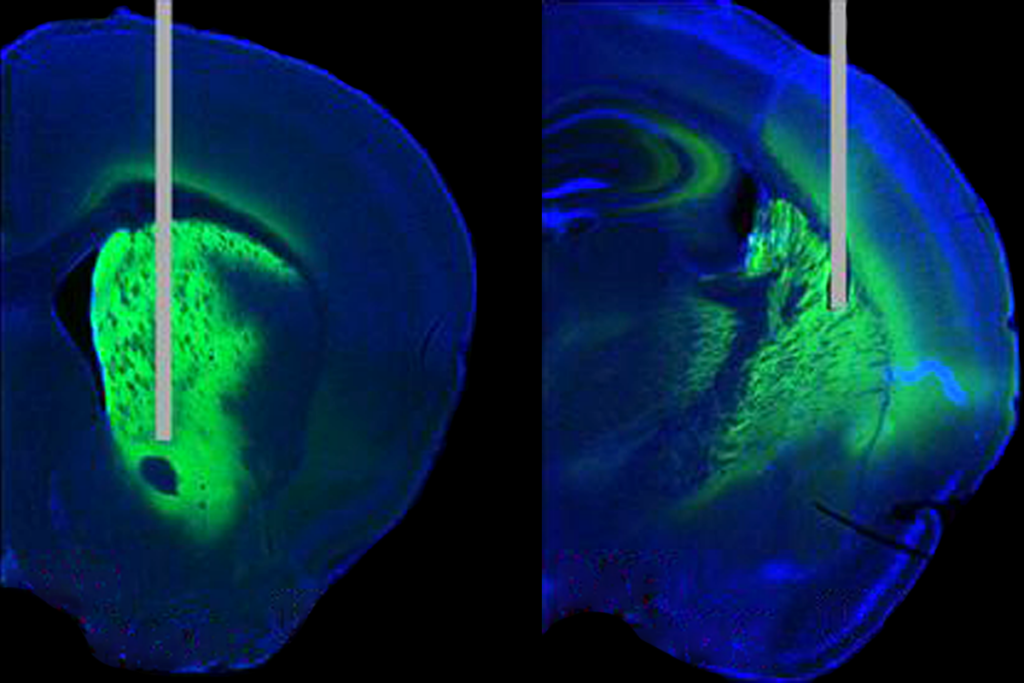A new virtual-reality headset delivers mice a more immersive experience than do traditional setups, according to a new preprint. The device could help researchers better understand the neural pathways underpinning complex behaviors.
To peer inside the brain of an awake mouse, researchers replace a piece of skull with a glass window and fix the animal in position beneath a microscope. By combining this approach with a virtual environment — usually by setting the mouse on a treadmill facing screens showing a panoramic display — neuroscientists can observe the neural networks involved in navigation.
But the expensive displays — originally built for people — have far higher resolution than can be detected by mice. And brain-recording equipment in the mouse’s periphery can distract the animal from the task at hand.
It’s like building a giant IMAX theater every time somebody wants to play a computer game, says study investigator Matthew Isaacson, a postdoctoral associate at Cornell University. “For greater immersivity, the headset is the right way to go.”
F
The screens project the rodent into a virtual environment that the researchers designed using video-game-building software. The animal navigates the simulated space by running atop a rotating Styrofoam ball equipped with optical sensors that determine speed and direction.
The goggles approach generated a similar pattern of activity in the visual cortex as the traditional, movie-theater-like setups, the team found using microscopy. And electrodes implanted in the hippocampus detected the activation of place cells — neurons that fire in response to specific locations — that corresponded to the entire virtual route.
To put the goggles to the test, the scientists trained mice to perform a spatial learning task. As the rodents explored certain sites, the researchers rewarded them with a sugary drink. When the mice repeated the circuit, they licked in anticipation of a treat as they approached the same places — suggesting they could recognize virtual locations.
Isaacson and his colleagues posted the preprint to Research Square in September.
U
When they displayed a dark, looming object — which doesn’t startle mice when displayed on a projector screen — the mice jumped or kicked, suggesting a more immersive experience.
This level of engagement is the tool’s biggest feat, Isaacson says. If mice behave more naturally in virtual experiments, they won’t need as much training and can spend less time in a head-fixed setup, he adds.
With an online instruction manual and cheap, readily available parts, the headset can be assembled for less than $200. Isaacson and his colleagues are working on lighter, miniaturized versions for freely walking mice. “We’ve been hearing from the [neuroscience] community as to what features they want,” he says.




